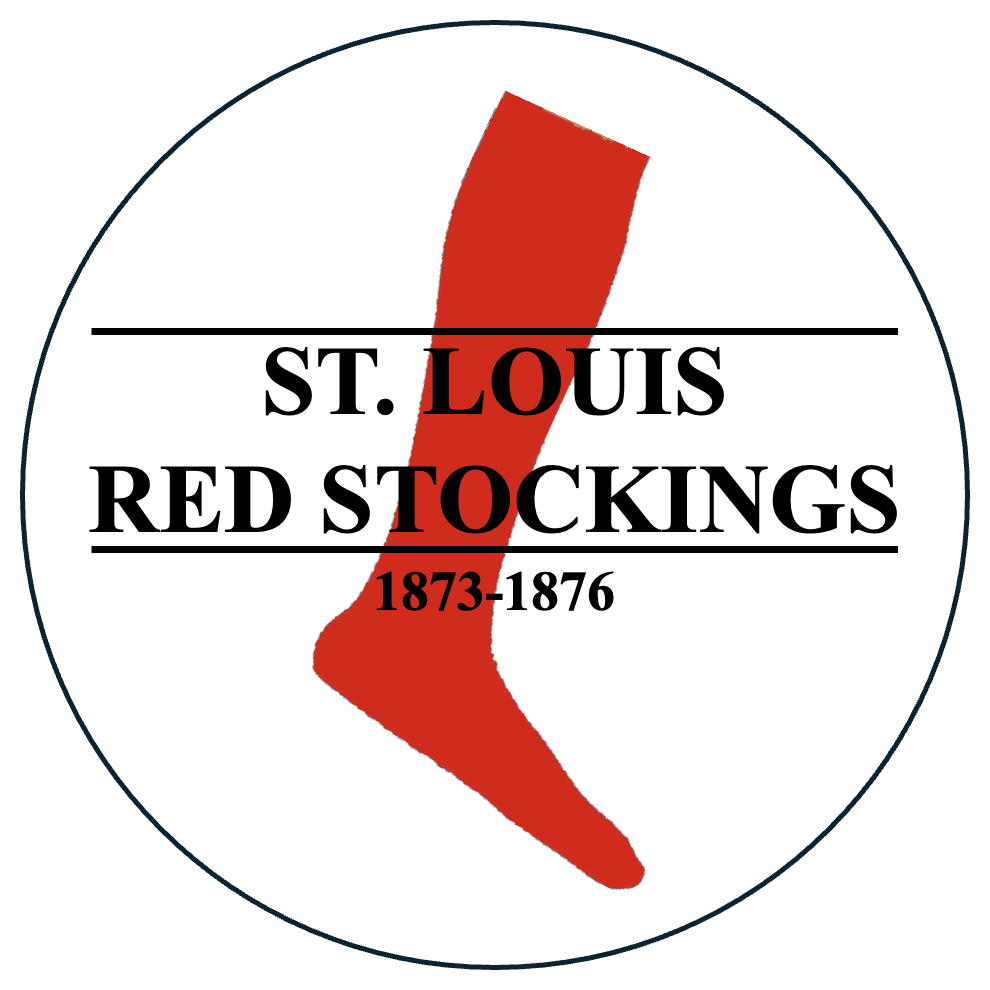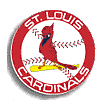
St. Louis Red Stockings
(a.k.a. St. Louis Reds)Independent club from 1873-1876
National Association (1875)
 |
St. Louis Red Stockings(a.k.a. St. Louis Reds)Independent club from 1873-1876 National Association (1875) |
|
The Red Stockings originated in 1873, when the Singer baseball club officially notified the Missouri State Association of Base Ball players that they were changing their name to the St. Louis Red Stockings and throwing their hat into the competition for the amateur championship of Missouri.
An overview of the 1873 season. In 1875, they joined the National Association as a professional club in response to the formation of the St. Louis Brown Stockings. They only played 19 Championship games before dropping out of the league. The club's record for its brief tenure was 4 wins and 15 losses (with one additional forfeit win). They placed 10th out of the 13 teams that competed in what proved to be the final season for the National Association. The Association collapsed that winter after the strongest teams pulled out and organized the National League. The Red Stockings played their games at Red Stockings Park (also known as Compton Park) located where Compton crossed the Missouri-Pacific railway. The first base line ran along Compton Avenue, while the third base line ran along the train tracks. The site is currently the location for a repair facilities for Metrolink. After the club dropped out of the National Association, it continued to play games against other professional and ametuer clubs. In November of 1876, the Red Stockings, or Reds, as they were more commonly known by then, were instrumental in organizing the International Association of Professional Base Ball Players, which was an amalgamtion of ametuer and professional clubs like the National Association before it, which joined together to combat the growing problem of "evolving," which was when a player skipped from one club to the next, which made a better offer. The IA was willing to work with the National League, but did not wish to be controlled by the National League. The National League responded to this threat to its growing power by proposing the League Alliance, an organization of clubs which were affiliated with the National League, and which agreed to abide by the League's restrictions on player raiding and other matters, but which were not full members. Clubs in the League Alliance agreed to allow the National League to arbitrate all disputes, a provision the International Association opposed. In all other regards, the IA accepted the tenants of the League Alliance, including penalties (usually blacklisting) against players who jumped contracts and the clubs who signed such players. The League Alliance effectively removed the threat to the National League's growing power that the International Association represented. The International Association lined up 13 clubs for the 1877 season, with 10 more joining during the season. The Reds were not one of them, as they folded in March 1877, unable to compete financially in light of a National League policy that restricted its ability to play NL clubs other than the Brown Stockings during the season. Over the next few years the Association gradually faded away, and it ceased to exist after the 1880 season. The League Alliance lasted through the 1883 season before it was abolished in the wake of the National Agreement. In 1879, remnents of the two St. Louis clubs, the Brown Stockings and the Reds, merged, and in 1880 the Sportsman's Park and Club Association was formed. Two of the principle figures involved in this reorganization were Al Spink and Chris Von der Ahe. Von der Ahe owned a saloon and boardinghouse near the Grand Avenue park where the new club would play its games, and he figured baseball fans would be good patrons for his business. He became a major figure in the formation of a new major league, the American Association, which first took to the field in the 1882 season. Al Spink and his brother Charles founded the Sporting News in 1886. The St. Louis Browns, Von der Ahe's club became the dominent team in the AA in the 1880's and ultimately became the St. Louis Cardinals in the National League.
A calendar of all games played by the Red Sox in 1875, both against National Association clubs and outside of the Association.
|
Game-by-Game results for the 1875 National Association
|
 |
 |
 |
 |
Back to Baseball in St. Louis